Banana Deficiencies in Hawaii
Bananas are incredible plants; their vigor and robustness make them exciting to watch as they grow. When they put out their giant flower buds, I’m always amazed! Bananas are the epitome of a tropical garden, renowned for their giant leaves fluttering in the wind, and the huge racks of food that they produce. Bananas are, unfortunately, the most difficult plant I’ve ever grown. I regularly feed them, yet they are almost always deficient in micronutrients. It’s important to recognize the different patterns of deficiencies to combat and keep them healthy. A vigorous, healthy banana will pump out a hundred pounds of fruit in a single rack! If your banana plants are not upright, robust and deep green, pumping out a leaf weekly, they are hungry, and most likely micronutrient deficient.
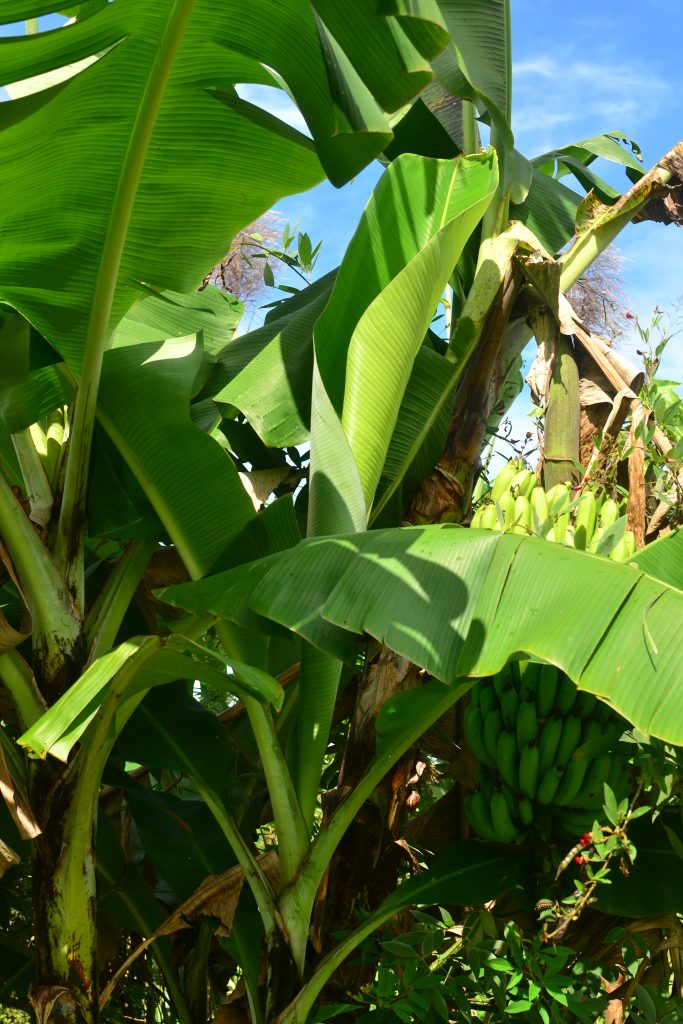
Williams. Large healthy leaf unfurling next to good sized rack
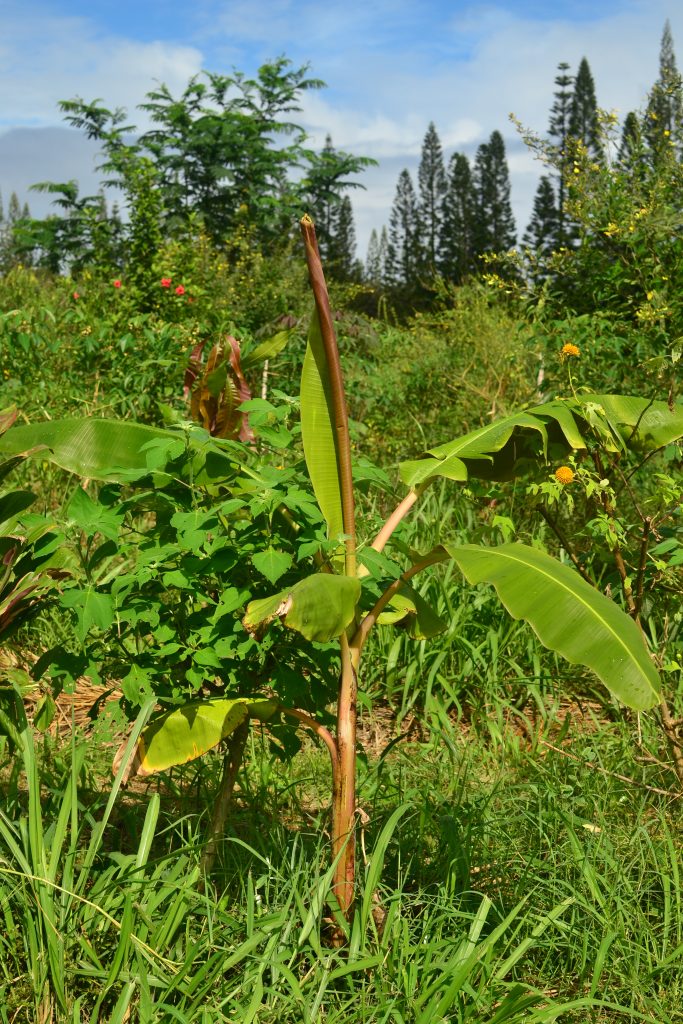
Iholena. Erect cigar leaf unfurling healthy
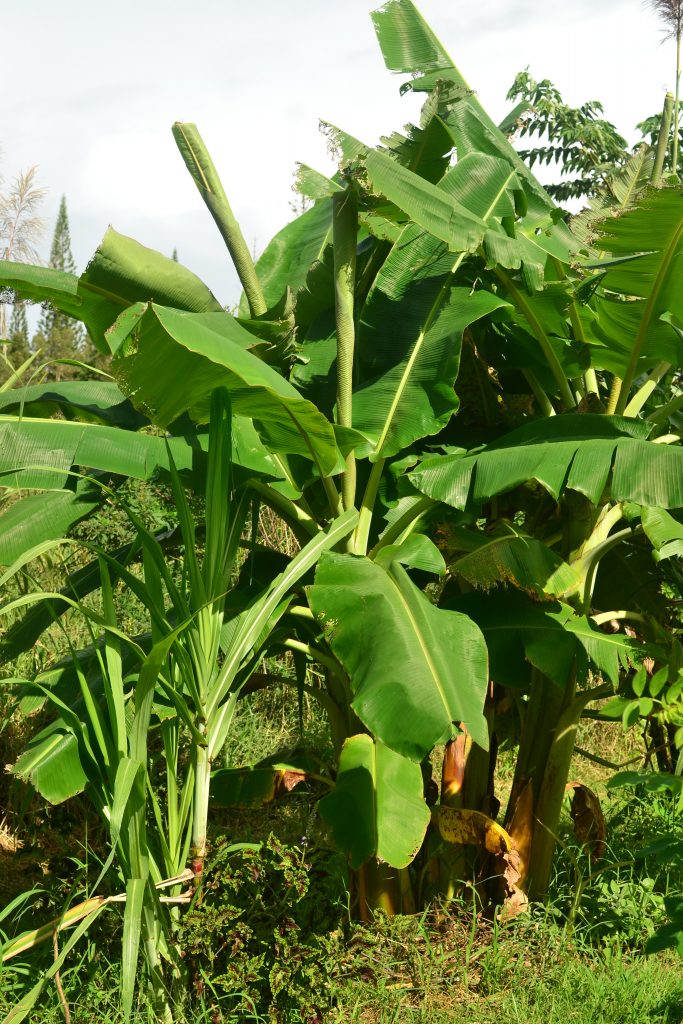
Dwarf Namwah. Deep green wide upright leaves
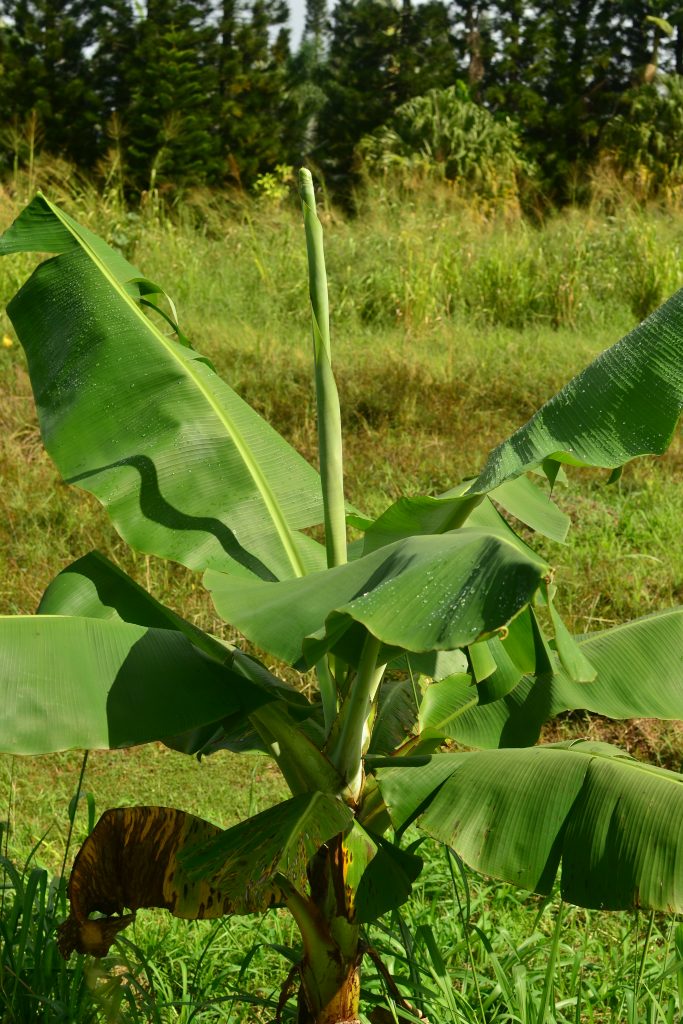
Dwarf Cavendish. Healthy leaf stature
Due to heavy degradation, banana nutrients are notoriously low in Hawaiian soils. Calcium, boron, potassium and sulfur are almost always low or unavailable to the plants. Luckily, this can be mitigated with a bit of care and consideration.
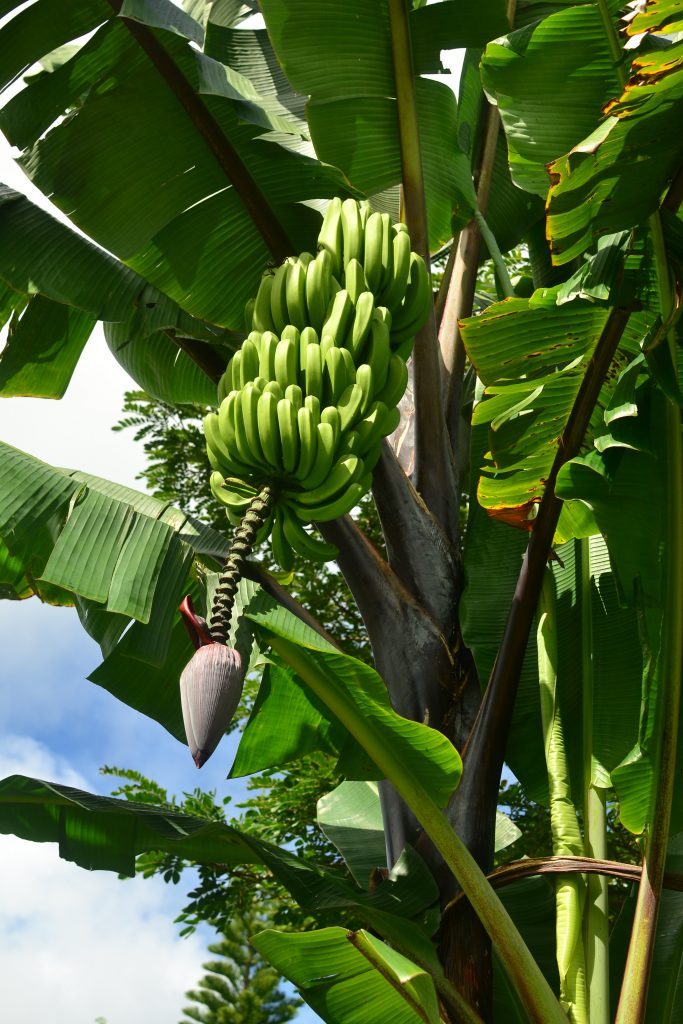
Maoli. Ele ‘ele
Banana Bunchy Top Virus (BBTV)
Banana Bunchy Top Virus is prevalent in all parts of Hawaii and is detrimental to the species. Sometimes deficiencies may look like BBTV. Knowing the symptoms of both BBTV and nutrient deficiencies will allow you to address the issues appropriately. Be sure to source virus free plants from a legitimate propagator. Too many times, people get plants from friends and they come with BBTV. There is no known cure for BBTV; a mat that has been infected will always carry and spread it. The main disease vector is aphids, who feed on the plants’ sap, and can quickly spread the disease from plant to plant. KILL YOUR BUNCHY TOP BANANAS! There is no other way around it, dig them out of the ground and chop up the corms and leave in a place they will die, like cement or in a trash bag out of the weather.
If you are suspicious of a banana plant potentially having BBTV, get it tested! The University of Hawaii extension offices do banana bunchy top virus testing for $12 per sample. Simply take the third leaf from the top, not counting the cigar leaf, cut it in half and cut out a 2 inch section on either side of the leaf midrib. Put in a plastic bag, label and bring it into the offices. Be sure to clean your tools with rubbing alcohol between sampling. I’ve tested many plants at the Komohana Research and Extension Center in Hilo. They have a very quick turnaround, and their results are very accurate.
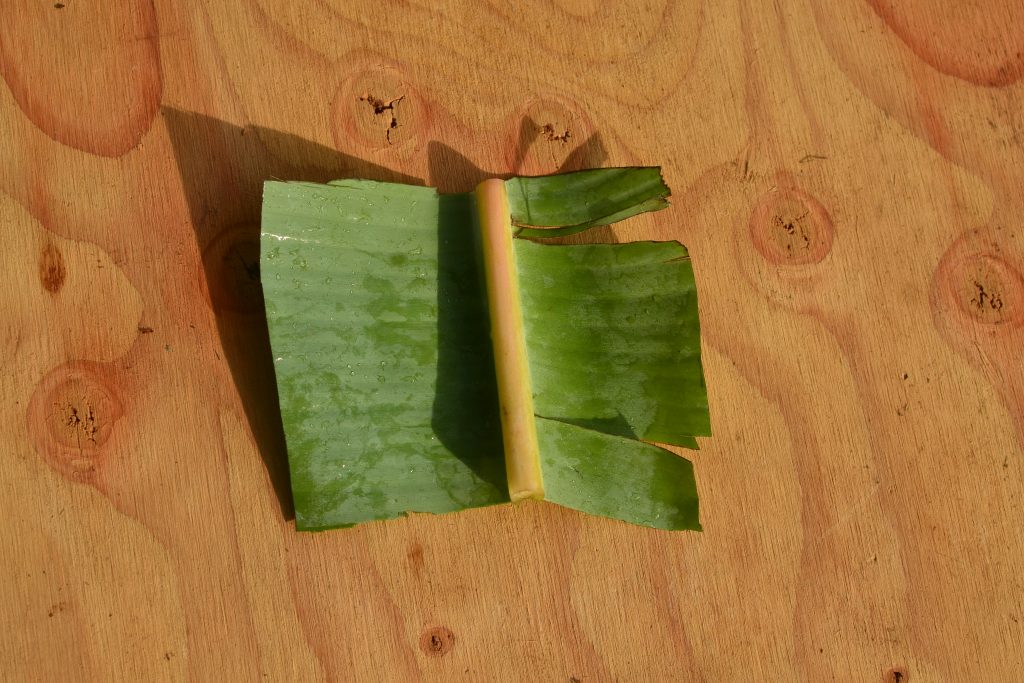
Banana Bunchy Top Virus Leaf Sample
GO TEST YOUR BANANAS; HAVE YOUR NEIGHBORS TEST THEIRS! This needs to be a community effort to reduce the problem. Many people have Banana Bunchy Top Virus and do not know or do not care. Inform other people of the problem and help them test and remove their bananas. It’s almost not worth the effort for someone to sell/propagate clean bananas because the keiki will be introduced into a diseased location, a very depressing issue. We need to change this, or we simply cannot grow bananas in populated areas. We’ve already lost many of the wild banana plants to habitat depletion and pig damage; do we really want to live in a Hawaii without bananas?
References for Banana Bunchy Top Virus. Information and detailed descriptions.
https://www.ctahr.hawaii.edu/bbtd/downloads/bbtv-details.pdf
https://www.ctahr.hawaii.edu/bbtd/
Nutrient Deficiency Patterns
Once you are sure your plants do not have Banana Bunchy Top Virus, it’s time to start identifying deficiency patterns. All banana varieties should produce fat, erect cigar leaves that open into very large, wide and dark green upright leaves. The leaves should sequentially get larger until the leaf before the flag leaf comes out just before flowering.
Be aware that one or multiple deficiencies may show up at the same time.
As water is a necessity for nutrient uptake, drought may lead to deficiency symptoms, including slowed leaf emergence and bunching, even in otherwise fertile soils. It may be a good idea to confirm plants are receiving proper irrigation prior to investing time and money into soil amendments.
Certain nutrients (calcium, boron, iron) cannot be stored and moved within the banana plants’ sap; these will need to be repeatedly added in order to be continuously accessible to the plants.
Many soil amendments are known as “slow-release minerals,” which means it will take time for them to become accessible and be utilized by the plant. A number of deficient-looking leaves may unfurl before results are visible.
To cure a plant more readily, utilize a micronutrient spray along with the mineral dispersal. This will cover the short term while the addition of minerals to the soil works in the long term.
The newest leaves on the plant tell signs of calcium and sulfur, the older leaves show potassium, nitrogen and iron levels.
Remember, an entire banana mat is a single plant, check out my post on bananas for more info.
Boron
Boron is necessary for normal formation and functioning of roots and cell walls. A classic boron deficiency symptom is abnormal unfurling of leaves. Boron deficiencies are closely linked to calcium deficiencies hence the common term “calcium-boron deficiencies.” Be very careful dispersing boron, as too much can be toxic to the plant. Normal store-bought Borax is an easy solution for adding boron.
Symptoms: Leaf etching (raised streaks across the veins); light yellow speckling; crinkling or wavy leaf edges and irregular corrugations; deformed leaves (twisted, curled, buckled or convoluted).
Recommended solution: One teaspoon of borax for immature plants; two teaspoons of borax for mature plants (plants with keiki).
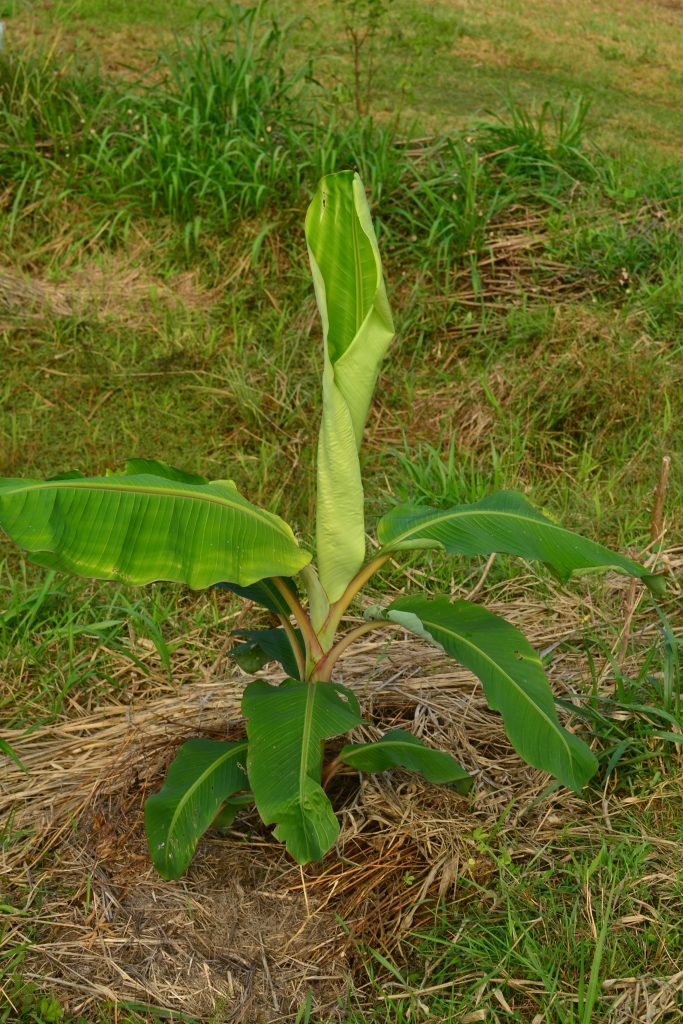
Calcium-boron and sulfur deficient

Boron Deficiency. Irregular corrugations
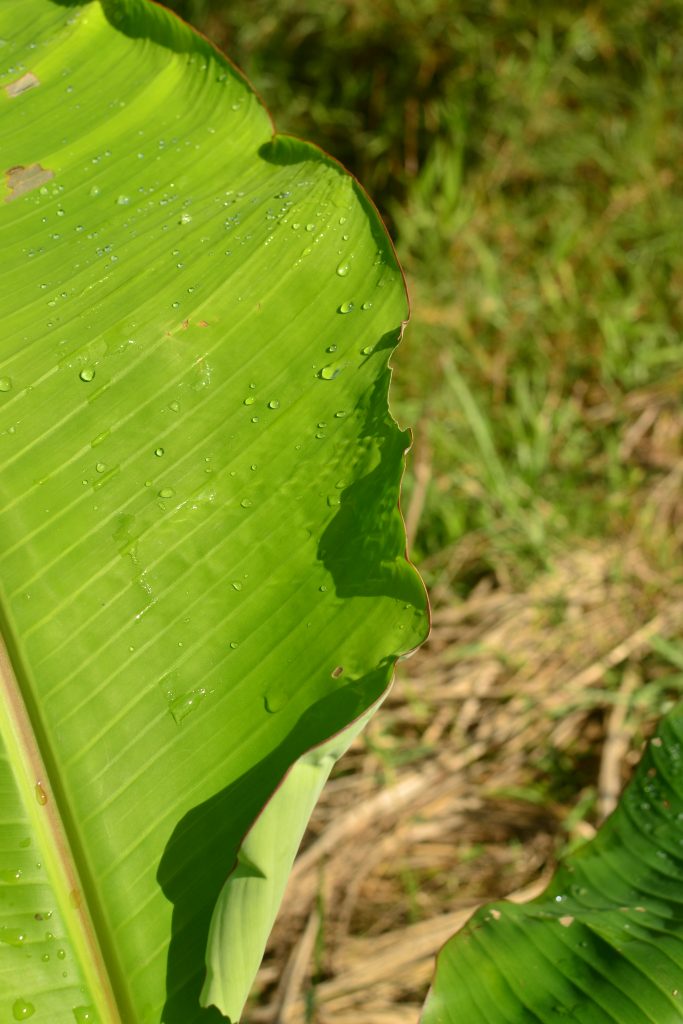
Boron Deficiency. Crinkling or wavy leaf edges
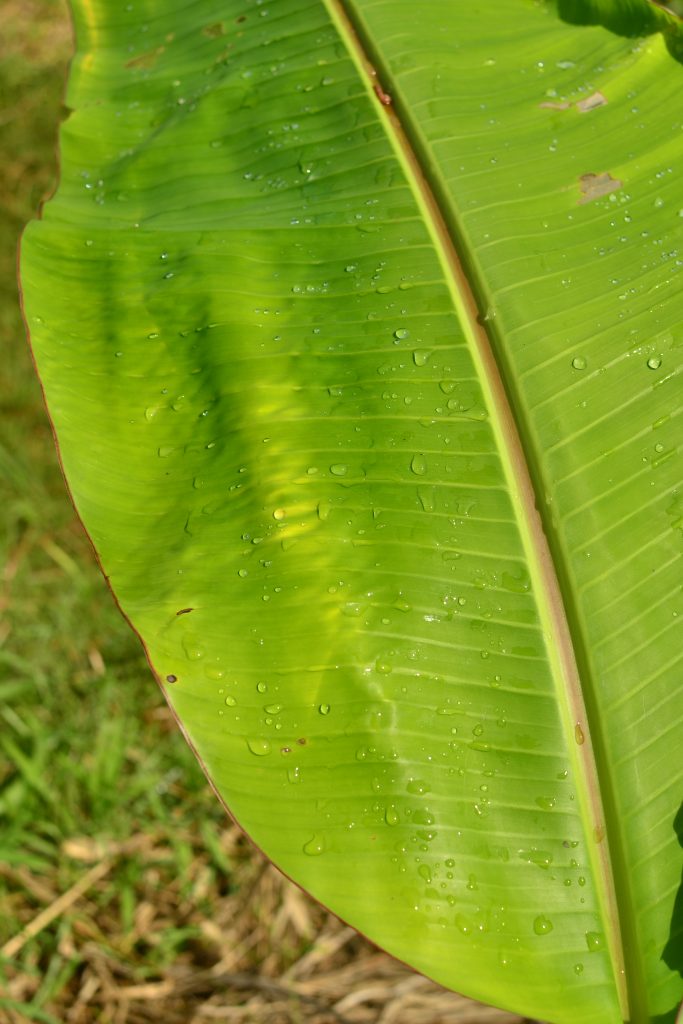
Boron Deficiency. light yellow speckling
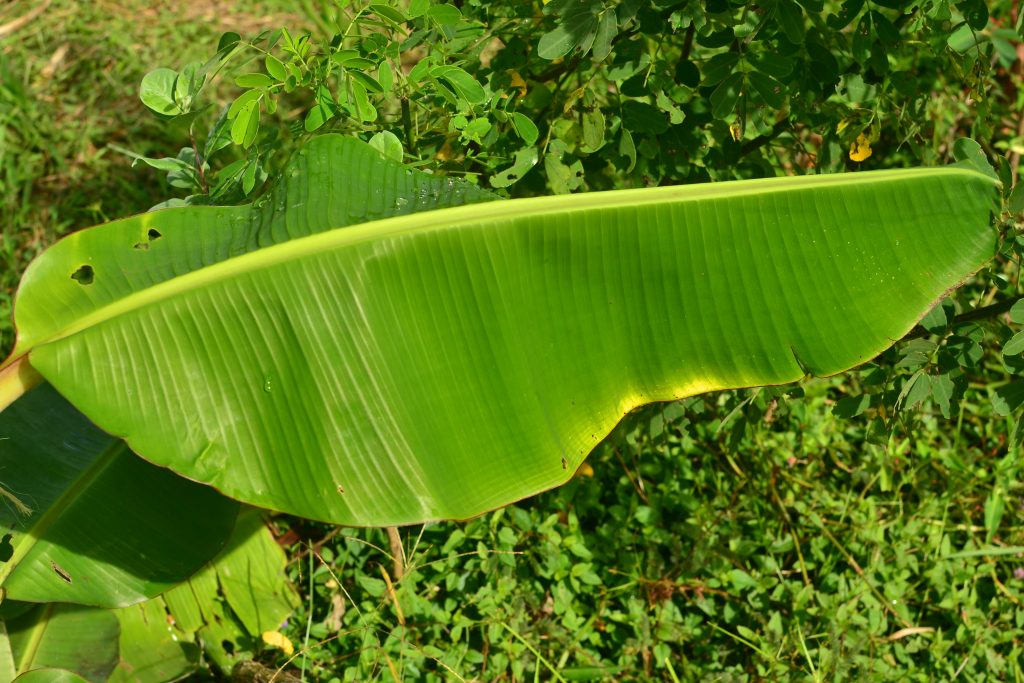
Boron Deficiency. light yellow speckling
Calcium
Calcium is necessary for skeletal development, rigidity, plasticity and hydrostatic pressure. Lacking in this mineral causes deformities indicating tissue collapse, overall weakness and is closely linked to boron deficiencies. Calcium also raises pH, enabling mineral uptake in acidic soils. Calcium deficiencies are, by far, the most common in my garden.
Symptoms: Flat, Travelers Palm look; bunched leaf stalk; leaves gradually diminishing in size and deforming, twisting, cupping, buckling and having wavy margins; newly unrolled leaves droop, unravelling slowly, weakly or incompletely, sometimes sticking together and tearing when opening; loss of rigidity in the leaf tips; marginal leaf yellowing; trunks weaken, and flower stalks lose rigidity.
Recommended solution: add limestone, crushed coral, calcium carbonate or dolomite. Mix into the soil. Use one half cup for immature plants, one cup for mature plants (plants with keiki).
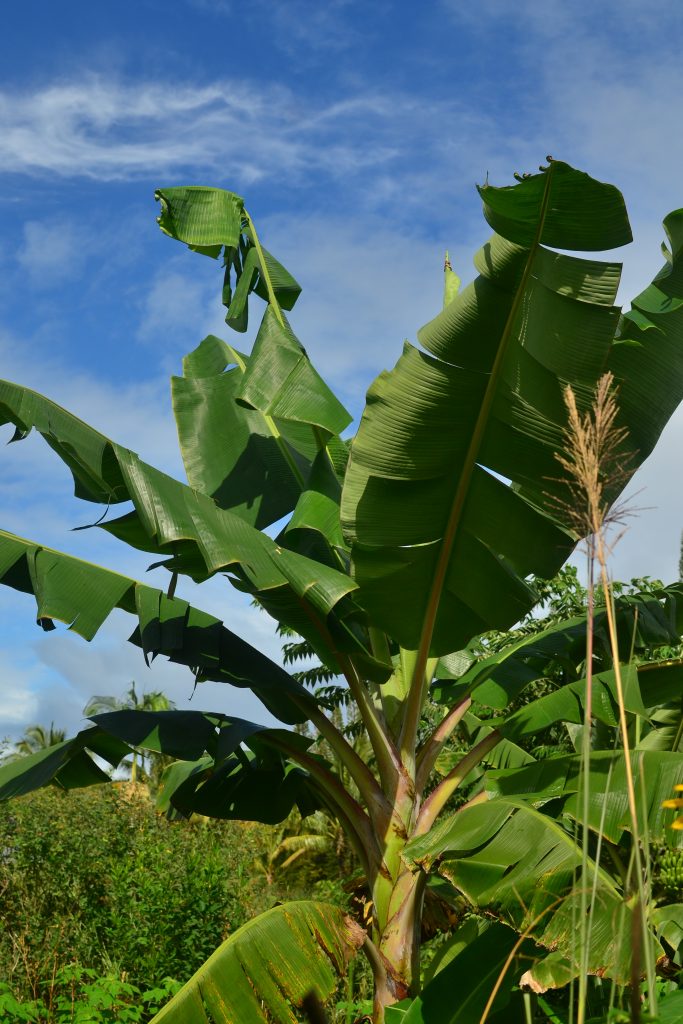
Calcium Deficiency. Curled leaf tip
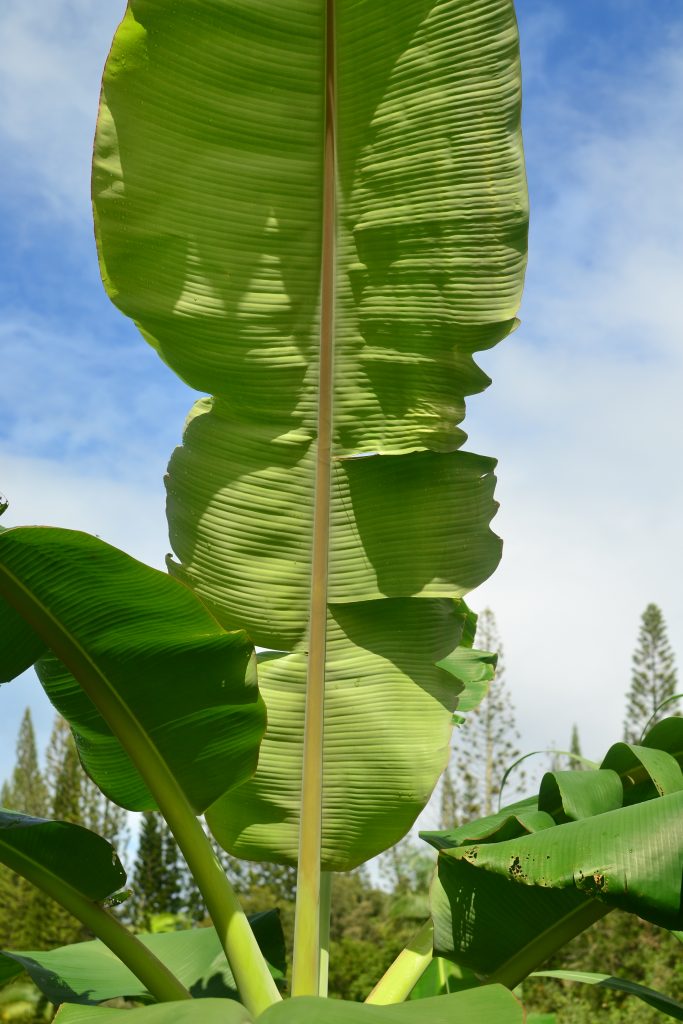
Calcium Deficiency. Deformed leaf
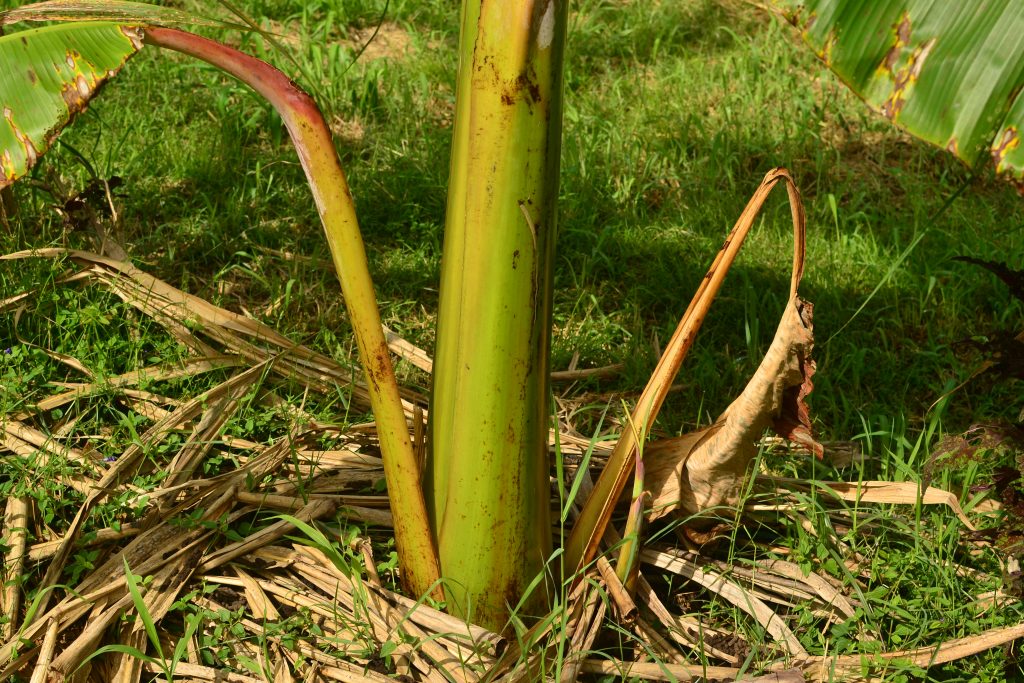
Calcium Deficiency. Collapsing trunk
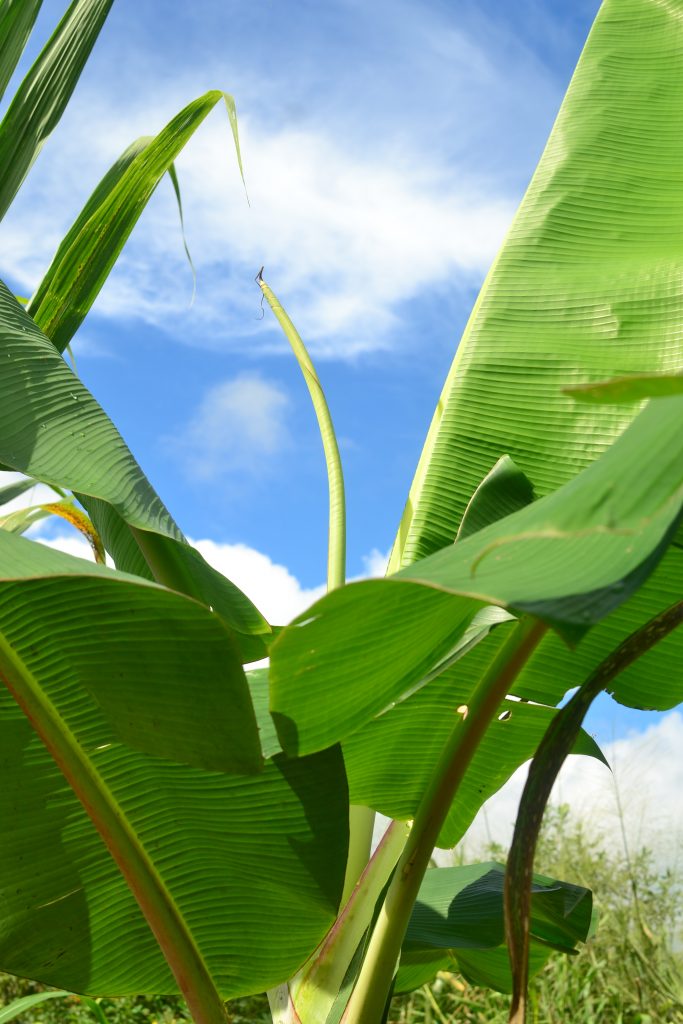
Calcium Deficiency. Bent cigar leaf
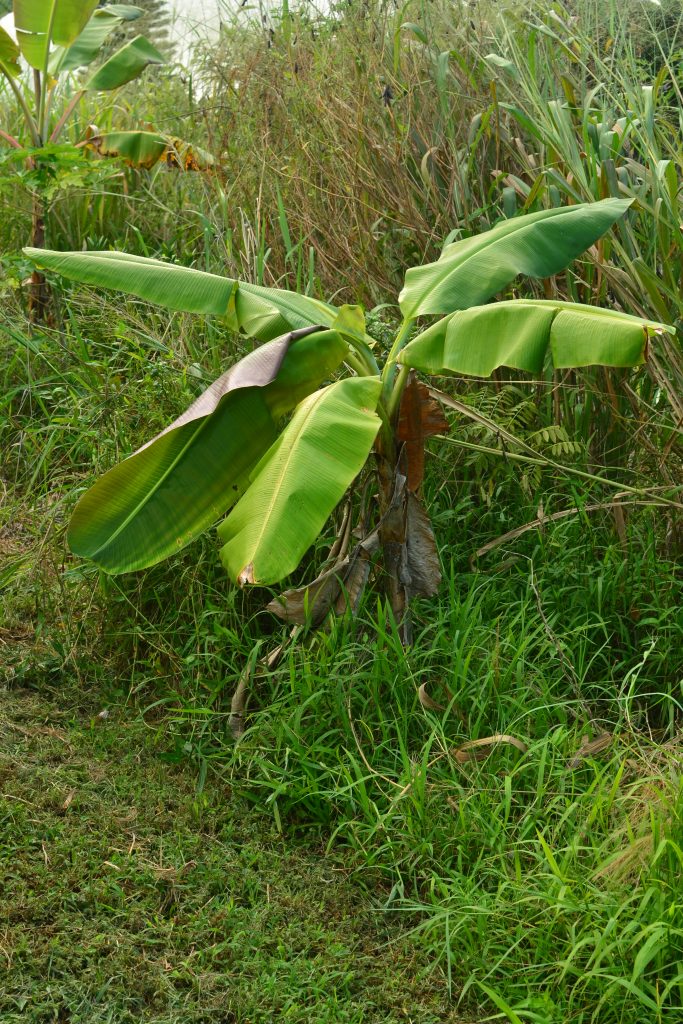
Calcium Deficiency. Curled/buckled leaf. Loss of rigidity
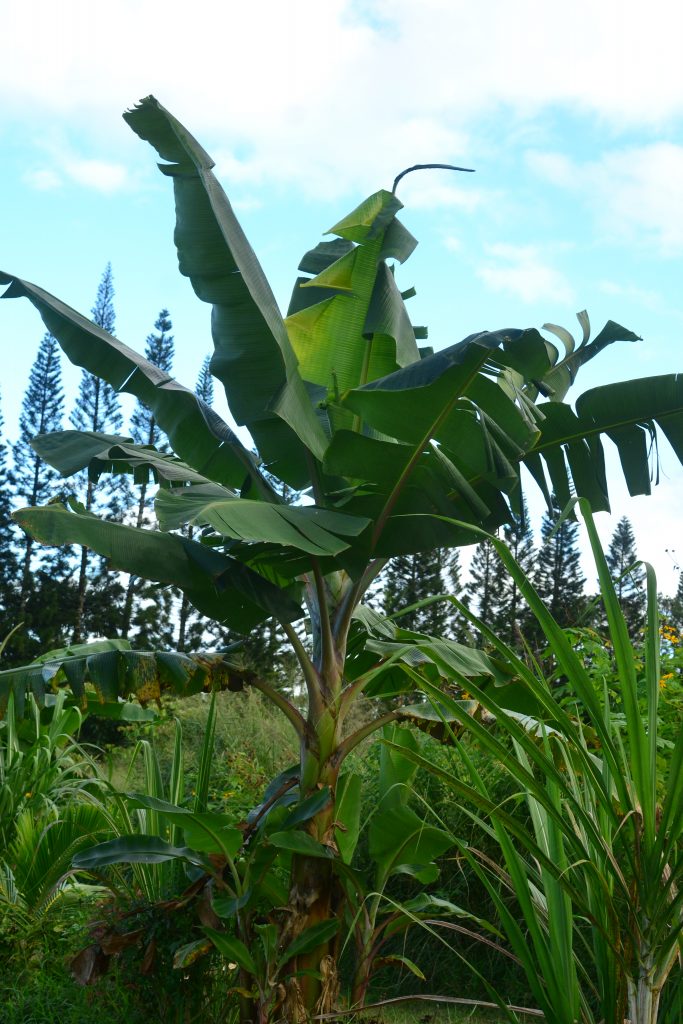
Calcium deficiency. Non-normal leaf unfurling. Yellowing.
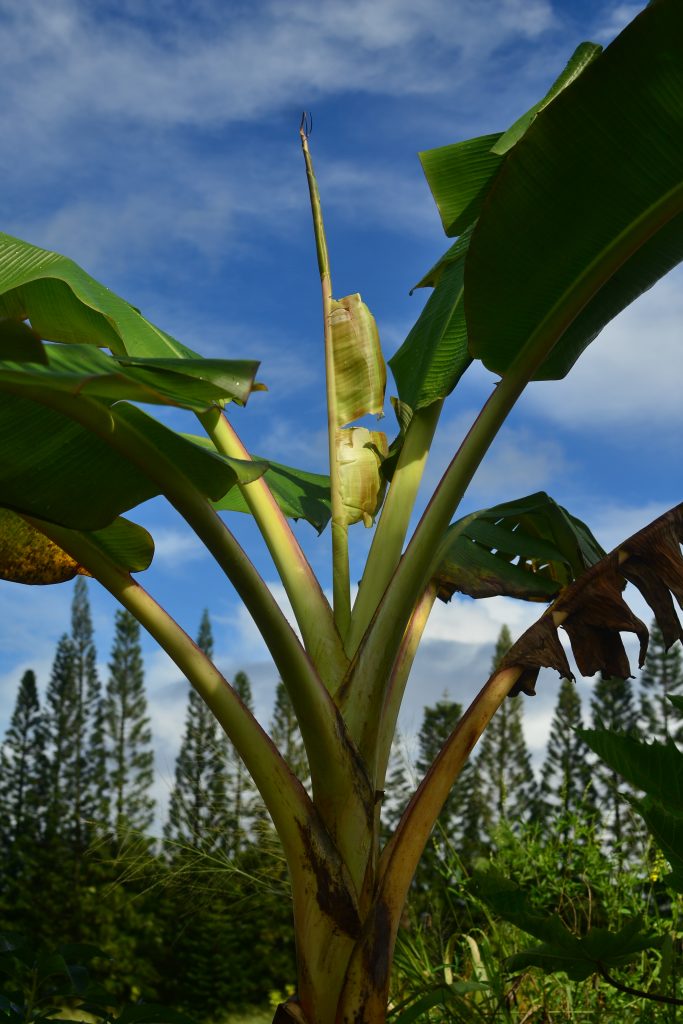
Calcium deficiency. Deformed/Shredded cigar leaf
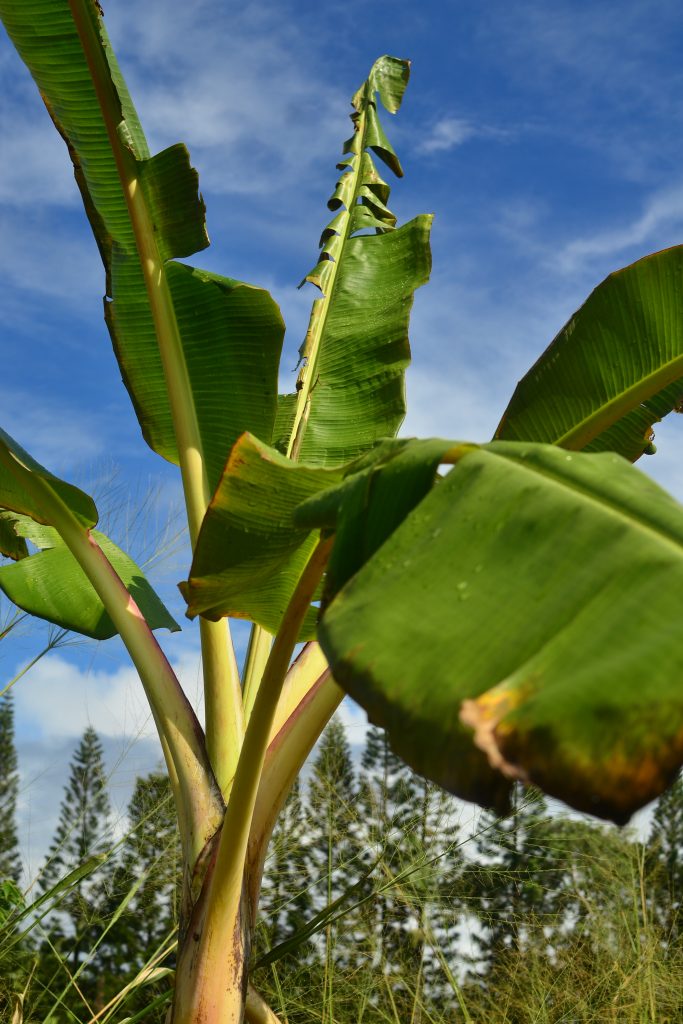
Calcium deficiency. Shredded Leaf
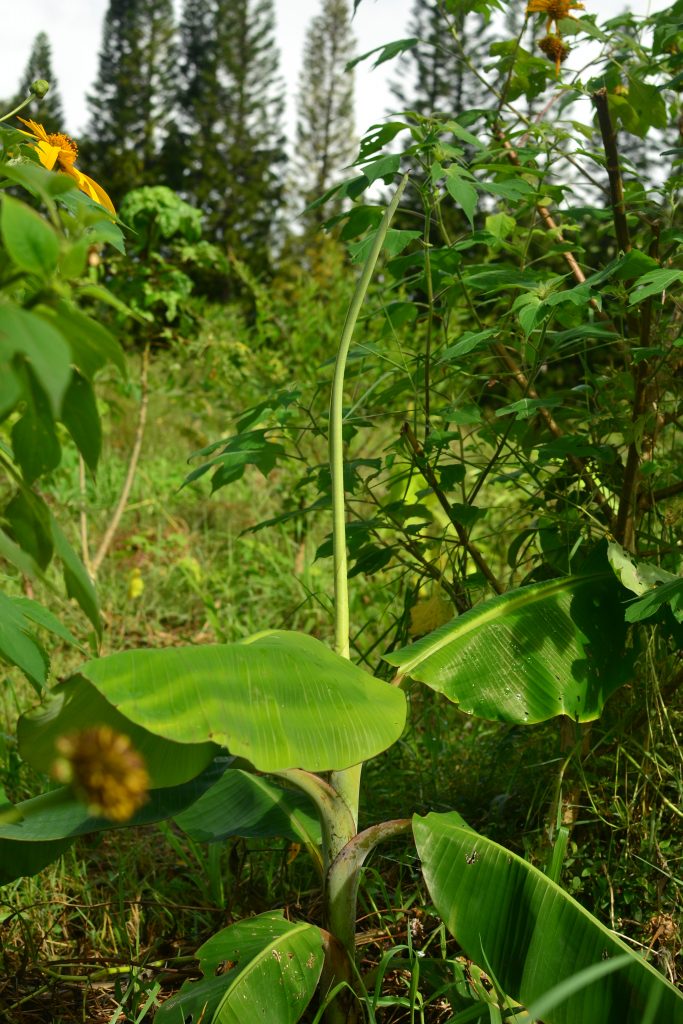
Calcium deficiency. Bent cigar leaf
Nitrogen
Nitrogen is an essential nutrient to all plants. It aids in the manufacturing of amino acids and proteins, promotes the production of chlorophyll, enzymes, vitamins and hormones. Without nitrogen, plants become stunted, anemic and weak. Nitrogen is mobile within the banana plant and will translocate into younger leaves. Bananas require water to absorb nitrogen, so water your plants in times of drought.
Symptoms: Stunted plants produce few leaves; older leaves turn chlorotic (yellow-green); bunches appear tiny; overall weakness; vibrant pink or purple leaf stalk wings that are not typical to the cultivar; weak roots; few or no keiki.
Recommended solution: Spread nitrogen fertilizer six to twelve times annually. We use Organic Nutri-Rich Chicken Manure Pellets 4-3-2 with Calcium 7% monthly, utilizing five to six cups per mature plant. Any animal manure will work as long as it’s properly composted.
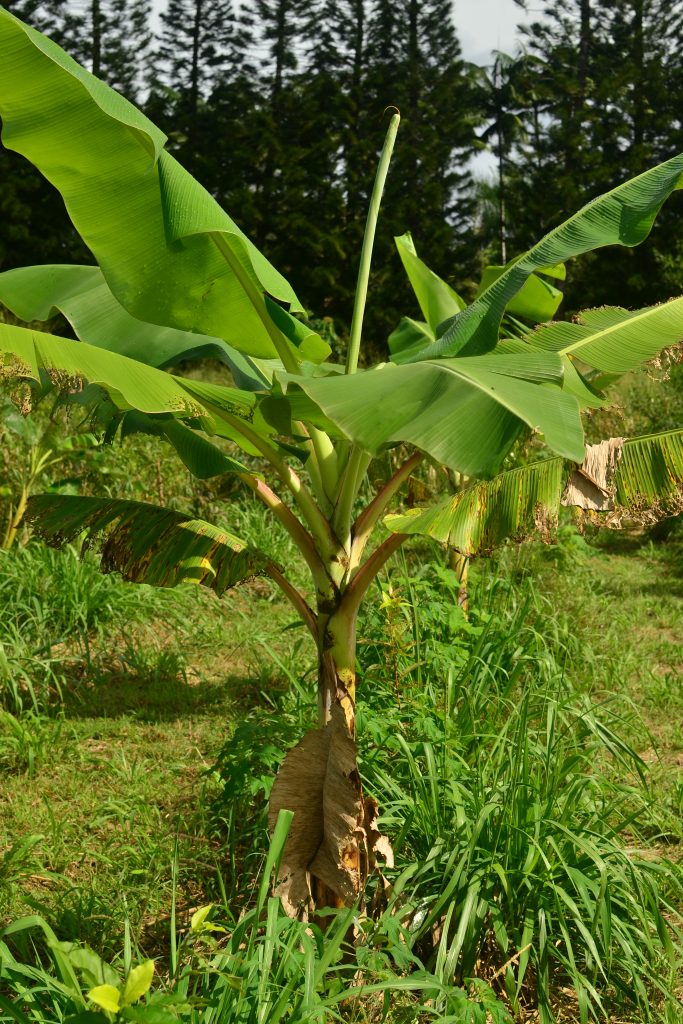
Nitrogen Deficiency. Dwarf Brazilian/Dwarf Apple. Pink leaf margins. Yellowish lower leaves
Potassium
Potassium is vital for growth, overall health, disease prevention, fruit production and quality.
Symptoms: Browning of leaf margins; premature and rapid yellowing of leaves; slow, stunted growth; fewer leaves coming out at an increasingly slow pace; general plant yellowing; maroon patches on leaves; skinny trunks; tiny racks with small, underdeveloped fruit; midribs of older leaves may be broken at one half to two thirds their proper length; Travelers Palm appearance.
Recommended solution: Add wood ashes when the flower bud appears. Add Sulfate of Potash 0-0-52. One quarter cup for immature plants and one half cup for mature plants. Also add fertilizer as the flag leaf appears before budding.
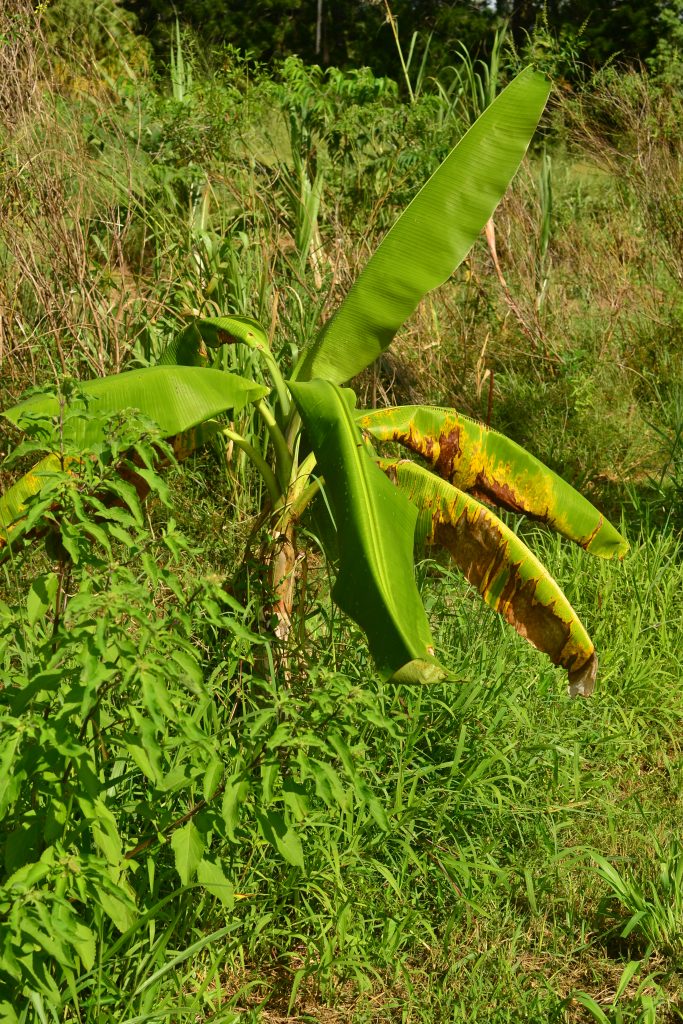
Potassium Deficiency. Non normal yellowing of lower leaves
Sulfur
Sulfur is essential for vitamin A production. Due to Hawaiian bananas being rich in vitamin A, they need larger doses to produce properly, especially Popoulu varieties.
Symptoms: Very pale-yellow coloration in new leaves; leaf blades become very soft and delicate, and tear easily; new cigar leaves may emerge completely white.
Recommended solution: Add Ammonium Sulfate 21-0-0 or Sulfate Potash 0-0-52, one quarter cup for immature plants and one half cup for mature plants. For Popoulu bananas, add one and a half cups for mature plants.
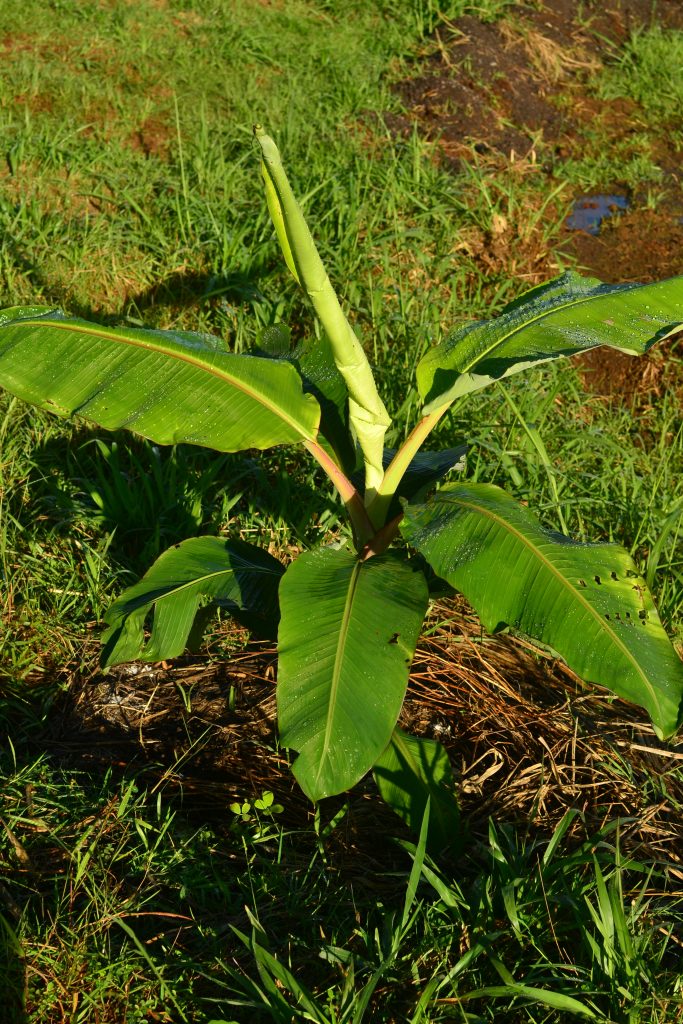
Sulfur Deficiency. Yellow cigar leaf. Calcium-boron deficiency
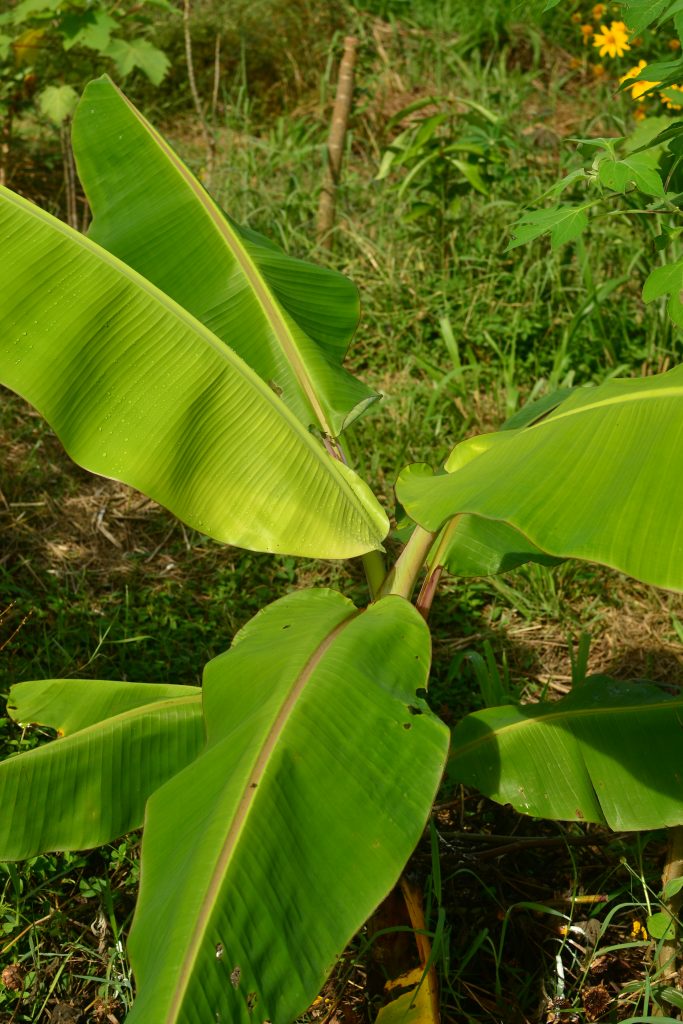
Sulfur Deficiency. Yellow new leaf
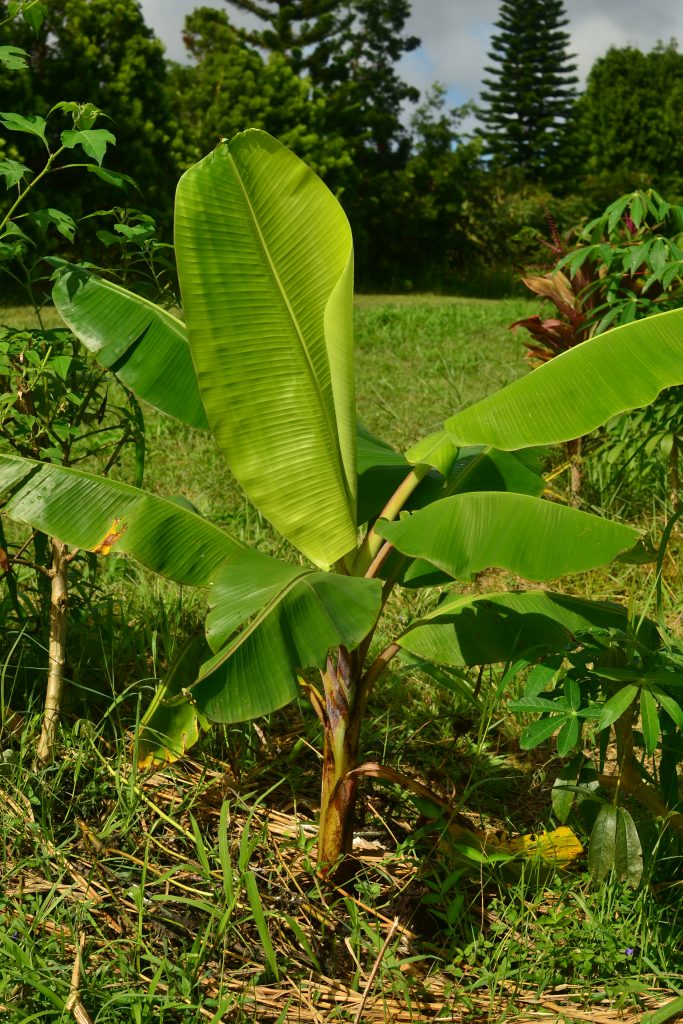
Sulfur Deficiency. Yellow new leaf. Notice tearing of margin on lower leaf
Pests
Rose Beetle Damage
Solution: Hand pick beetles at night and crush or drown in soapy water. Hand picking is surprisingly effective in reducing populations.
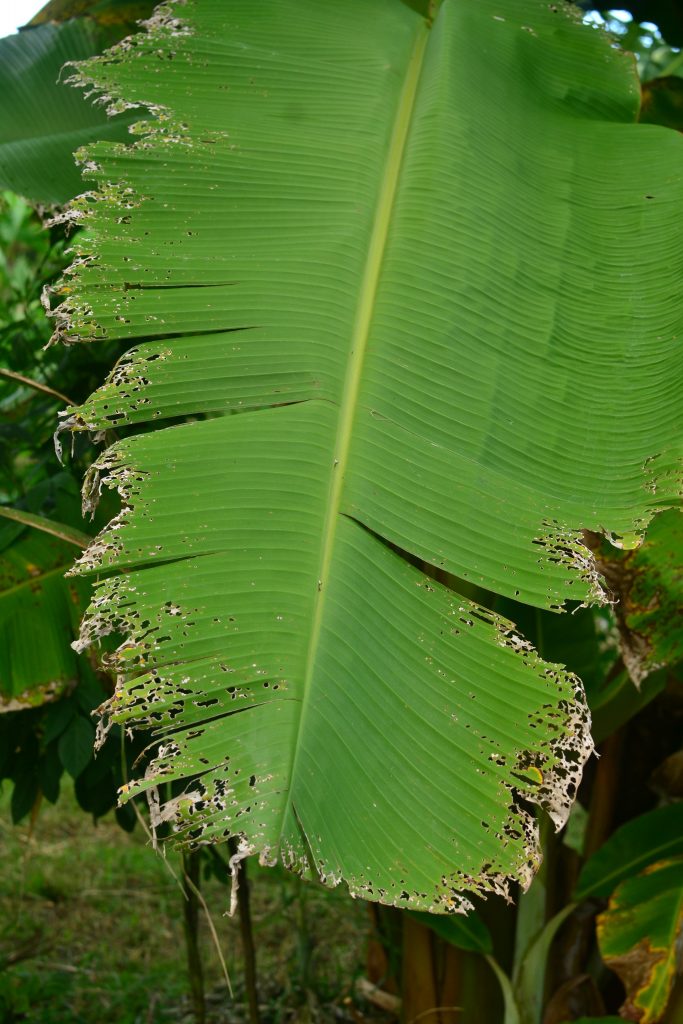
Banana Rose Beetle Damage
African Snail Damage
Solution: Hand pick and squash or drown in soapy water. Collect at night.
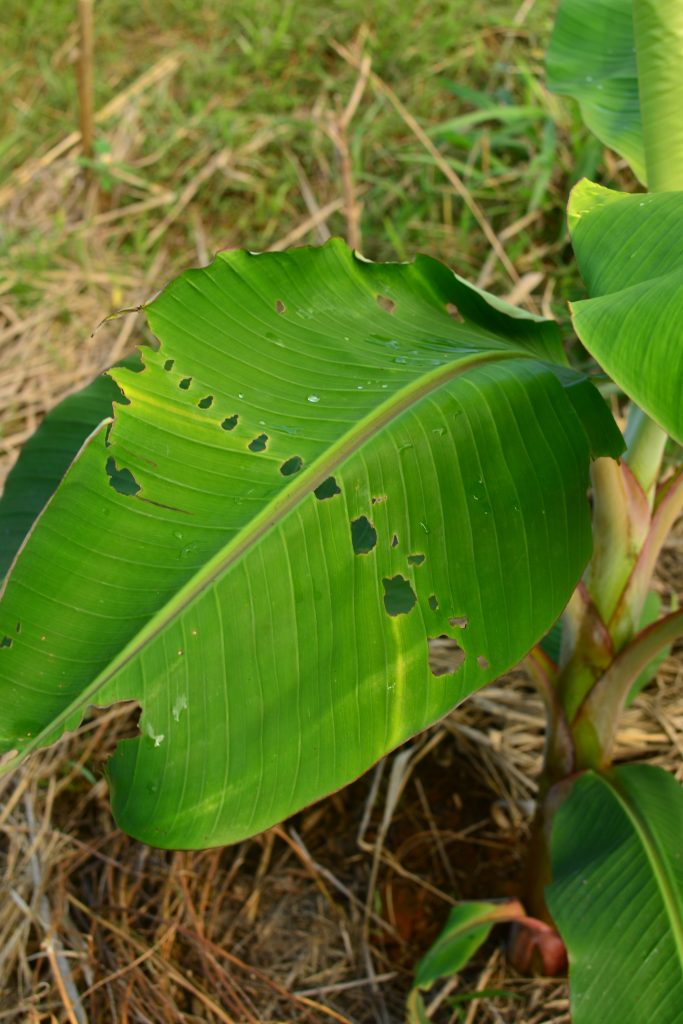
African Snail Damage
Banana Corm Weevil
Solution: Obtain weevil-less propagation material, source from a legitimate propagator. Always inspect corms before planting. If a plant has weevils, learn about the correct way to clean corms to dig and remove weevils prior to planting and/or propagation. Plant in a non-infested area.
I do not have weevils nor any photos with their damage at this time. If plants fall over due to weakened roots, banana corm weevils are most likely the problem.
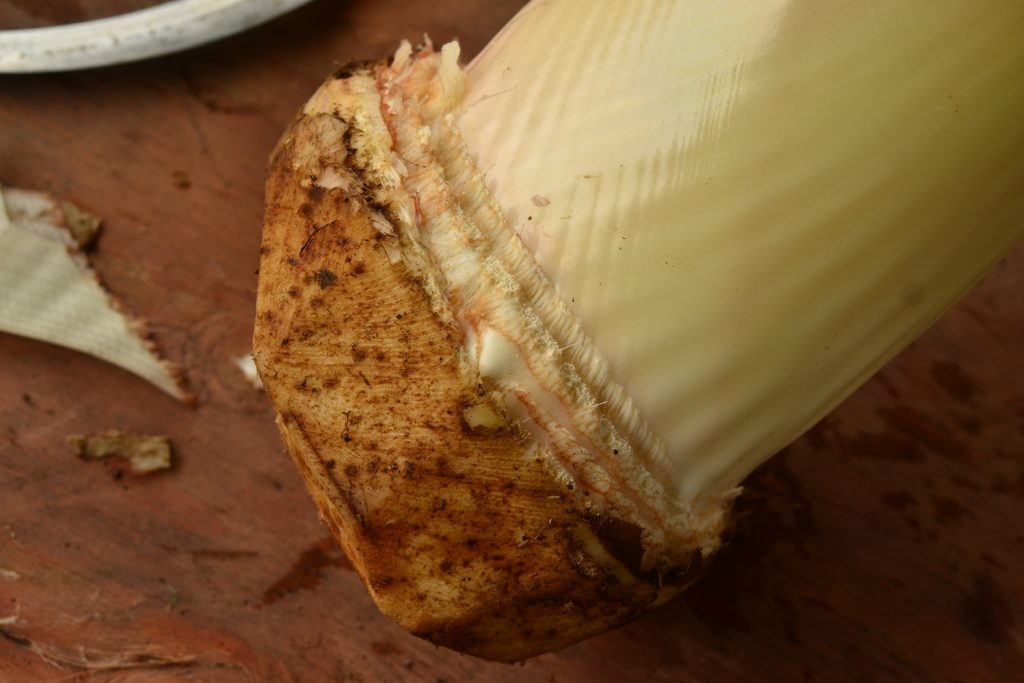
Properly cleaned corm due to banana weevil damage
Tips
To combat potential deficiencies, mineral fertilize along with your normal fertilizing procedures when planting. Up to four times per year (two to three times in low rainfall areas, <60 inches), add the following to the soil:
Immature Plants Mature Plants (Plants with keiki)
1 teaspoon borax 2 Teaspoon Borax
½ cup dolomite 1 cup dolomite
¼ cup of Ammonium Sulfate 21-0-0 ½ Cup Ammonium Sulfate 21-0-0
Or ¼ cup of Sulfate Potash 0-0-52 Or ½ Cup or Sulfate Potash 0-0-52
Dig bananas as large of a hole as possible when planting. Place fish scraps and compost in the bottom of the hole. Plant them deeper than their rootball. Fertilize with nitrogen monthly. Pee on them regularly. Spray micronutrients twice monthly. Apply composts and mulch thickly and widely around the base of the plant as often as possible. Literally hill them as you would potatoes, trunks will not rot from contact with soil/mulch. Do not remove leaves until they are completely brown. The plants may still be utilizing those leaves and translocating nutrients. Manage a few delicious varieties intensively; resist the urge to mass plant them. Understand they are difficult to manage properly, which is essential to reduce the spread of BBTV. (Don’t get in over your head!) Test your banana plants for BBTV and share them with others committed to stopping the spread of the virus.
All your efforts won’t be fruitless! Watch the plant pump out larger racks than you’ve ever seen!
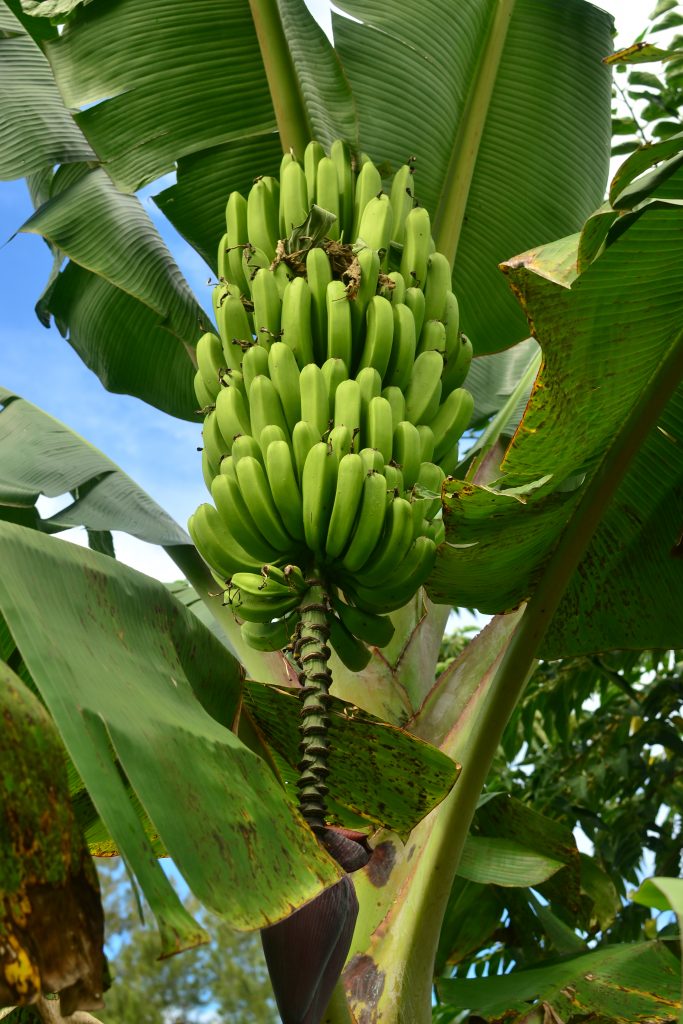
Dwarf Maoli
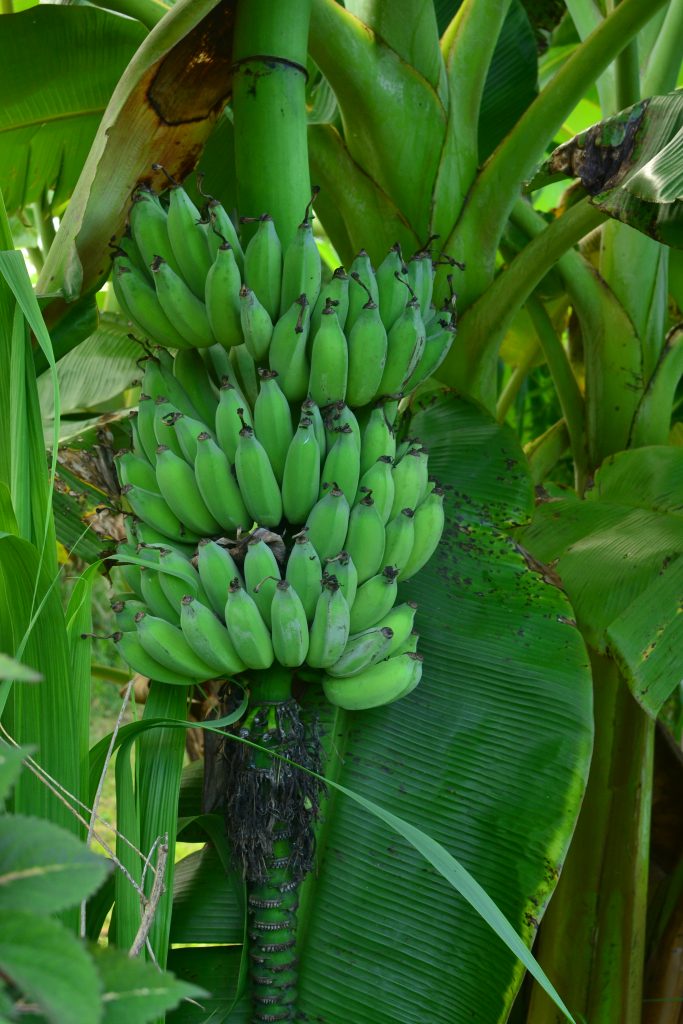
Dwarf Namwah
A lot of my information came from the amazing book: The World of Bananas in Hawaii: Then and Now by Angela Kay Kepler and Francis G. Rust. For a much more detailed and in-depth discussion of bananas in Hawaii including varieties, lore, recipes, nutrients, deficiencies, diseases and pests, check it out! https://uhpress.hawaii.edu/title/the-world-of-bananas-in-hawaii-then-and-now/
Citation: Kepler, A. K. and F. G. Rust. (2011) The World of Bananas in Hawai’i: Then and Now – Traditional Pacific & global varieties, cultures, ornamentals, health & recipes. Pali-O-Waipi’o Press. Haiku, Hawaii.
Happy Gardening!
Can I send my sample to the Komohana Station in Hilo, or does it have to be delivered in person? Mahalo
i believe you can send it. im sure you will need to find the paperwork and fill it out and send it in too. there is also a kona and waimea extension office. but im not totally sure if they do testing as well